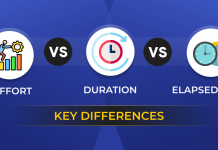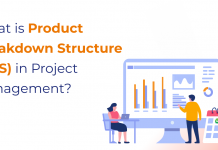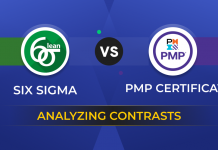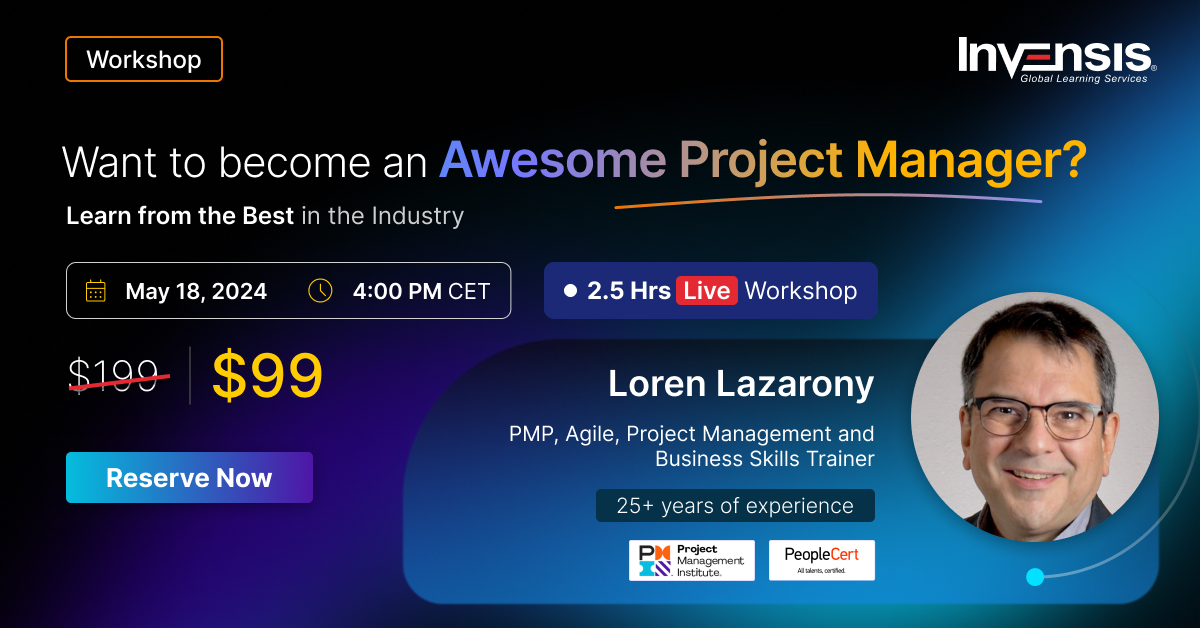
Navigating the complexities of project management demands the right approach. Among the myriad methodologies available, Waterfall project management stands out for its linear, phase-based structure, guiding projects seamlessly from conception to completion. This approach not only ensures a systematic progression but also streamlines the entire life cycle of a project.
Dive into this comprehensive guide to understand the nuances of Waterfall project management. Discover its distinct phases and explore its advantages, challenges, and real-world applications. Equip yourself with this knowledge and empower your project management journey.
Table of Contents:
- What is Waterfall project management?
- The Waterfall Project Management Phases
- Advantages of Waterfall Project Management
- Waterfall Project Management Limitations
- When to use waterfall methodology?
- Waterfall Project Management Examples
- Conclusion
What is Waterfall Project Management?
Waterfall project management is a traditional, linear approach to managing projects, marked by its distinct and sequential phases. Each phase follows the previous one without overlap, and once a phase concludes, revisiting it isn’t standard procedure.
Originating from industries like manufacturing and construction, this method emphasized the critical nature of tasks happening in order. The bedrock of this methodology is meticulous planning and thorough documentation.
A project’s requirements are established at the outset, ensuring clarity for all team members regarding their roles, responsibilities, and the project’s milestones.
Documentation, often visualized through flowcharts or swimlanes, is a constant reference for the team, helping track progress and maintain alignment. The Waterfall Project Management methodology prioritizes clarity, order, and documentation throughout its sequential progression.
The Waterfall Project Management Phases
The Waterfall methodology operates sequentially and chronologically, emphasizing pre-determined dates, requirements, and results. Unique to this approach, teams only frequently interact if specific integrations are necessary, largely operating as independent units.
Moreover, team members often work autonomously, reducing the frequency of status updates, contrasting the Agile method’s iterative feedback system. Typically, each phase must conclude before the next begins.
The Waterfall method can be broken down into five core stages in software development. Each stage represents a critical step in the development process, ensuring the project progresses systematically and cohesively.
Requirements Phase
The “Requirements phase” is the foundational step in the Waterfall methodology, setting the goal for the entire project. Given the sequential nature of Waterfall, where each task relies on completing the preceding one, this phase demands thorough planning. A significant portion of the project’s timeline is often allocated to this initial planning to ensure no stone is left unturned.
In this stage, the team dedicates its efforts to gathering comprehensive information, aiming to craft a roadmap that will guide the project to success. To harness the Waterfall method’s potential, creating an in-depth project plan detailing every phase is essential.
This plan, typically known as the project requirements document, should encompass:
- A clear breakdown of each project phase
- Identification of the team members responsible for each stage
- Highlighting key dependencies within tasks
- Enumeration of required resources
- A projected timeline indicating the duration anticipated for each stage
By the conclusion of the Requirements phase, stakeholders should possess a well-defined blueprint of the project’s trajectory, ensuring clarity and alignment from inception to completion.
System Design Phase
In this phase, the project’s details are meticulously defined and structured. Following the foundational planning in the Requirements phase, the Design phase delves into how the project will be executed. It focuses on charting the actions required to meet the project’s scope and establishing the sequence in which these actions will be undertaken.
This phase is pivotal in determining the steps and setting forth key project parameters like expected timelines and budgets. Drawing a parallel, if the Requirements phase (planning phase) answers the question “what?” in terms of project goals and scope, the design phase addresses the “how?” by detailing the execution strategy.
For instance, in software development, this phase would meticulously document choices regarding the programming language and any associated hardware prerequisites. Essentially, the design phase crystallizes the strategy, ensuring a clear and actionable roadmap for the project’s subsequent stages.
Implementation
After extensive planning and design, this phase signifies the actual execution of the project. All the groundwork laid out in the previous stages comes alive through tangible actions.
The key responsibilities to be performed during this phase are:
- Task Allocation: Assigning tasks to respective teams based on priority
- Team Collaboration: Ensuring seamless team interactions, facilitating prompt deliveries and effective handovers
- Resource Management: Overseeing workload distribution and effectively utilizing shared or specific resources
- Progress Monitoring: Keeping a close eye on the project’s progress and initiating corrective measures if any delays emerge
- Risk Management: Actively identifying potential pitfalls and taking measures to prevent scope, budget, or timeline deviations
- Testing: Conducting various tests, including performance and usability, to ensure the project meets the set standards
- Project Delivery: Handing over the completed project to the client or end-user
Verification or Testing
The “Verification phase” ensues after the product has been delivered to the customer. It’s a critical juncture where the product undergoes scrutiny to ensure it aligns with the expectations set during the planning stages.
During this phase:
- Customer Testing: The customer rigorously tests the delivered product, identifying inconsistencies, issues, or shortcomings
- Performance Assessment: The project’s outcomes are benchmarked against the previously set goals and objectives to gauge its success
- Team Remuneration: If the project involves contractors, this is the time when they get compensated for their contributions upon the project’s culmination
- Administrative Tasks: This often entails the project manager handling various administrative duties, such as endorsing paperwork, settling accounts, or winding up contracts to mark the project’s official completion
- Post-Project Review: The team collectively reflects on the project, analyzing the successes, areas of improvement, and lessons learned. This introspection can be invaluable, providing insights to refine practices, enhance efficiencies, and better handle subsequent projects
The Verification phase is about confirming the product’s quality and functionality, wrapping up administrative tasks, and introspecting for continuous improvement. Doing so sets the tone for better management and execution of future projects.
Deployment and Maintenance
The “Deployment and Maintenance” phase is pivotal to the culmination of a project and its sustained success post-launch.
- Deployment: In the project context, this phase signifies the release of the developed project to the end user. In other industries, it represents the launch and delivery of the final product or service to the intended customers.
- Maintenance: Post-deployment, the focus shifts to ensuring the product operates optimally. This often involves:
- Tweaks and Adjustments: Addressing any lingering issues or enhancing product performance. Such modifications often arise from change requests submitted by users or stakeholders
- Issue Resolution: Acting swiftly to rectify any defects, bugs, or issues that might crop up post-launch ensures the product’s reliability and the end user’s satisfaction
Advantages of Waterfall Project Management
The Waterfall Project Management methodology offers a structured and systematic approach to project execution. Its linear and phased progression ensures clear objectives are set from the outset, fostering meticulous planning and a well-defined path to project completion.
This clarity reduces ambiguity, streamlines communication, and allows for accurate time and budget estimations.
As each phase depends on the previous one, there’s a built-in quality assurance mechanism, ensuring errors are caught early. Overall, Waterfall provides a predictable and transparent framework that can be particularly advantageous for projects with well-defined requirements and limited scope changes.
Let us now look into a deeper understanding of the benefits of waterfall project management:
Simplifies Tracking
The Waterfall methodology ensures a project’s smooth progression, even amidst unforeseen team changes. Its strong emphasis on documentation facilitates the seamless integration of new members into ongoing projects. Instead of deducing the intent behind previous steps, everything is chronicled, from project inception to its culmination. This documentation enables newcomers to acclimatize rapidly.
Facilitates Process Review and Replication
With Waterfall’s step-by-step documentation, retracing steps to pinpoint errors becomes straightforward. This consistent record-keeping not only aids in error detection but also establishes replicable processes, streamlining onboarding for newcomers, as discussed earlier.
Accelerates Onboarding for New Team Members
For newcomers, traditional onboarding often entails observing seasoned team members. The exhaustive documentation inherent to the Waterfall model simplifies this process. While interpersonal connections and team integration remain vital, the available documentation offers a robust knowledge base.
This information can swiftly address many queries, eliminating the need for newcomers to consistently seek out peers for answers.
Comprehensive Record-Keeping
Given Waterfall’s sequential nature without backtracking, meticulous documentation from the outset is imperative. Moreover, these records gain validation from all stakeholders, ensuring all decisions and changes have a justifiable basis in the documentation.
Streamlines Project Management
The waterfall methodology offers a clear-cut structure, making projects manageable irrespective of team size. With the initial phases dedicated to detailed planning, execution becomes a matter of following the charted course.
Waterfall Project Management Limitations
While effective in many instances, the Waterfall method has its fair share of limitations. These potential drawbacks underscore why it’s not a one-size-fits-all solution for every project.
Limited Flexibility
The rigidity of the Waterfall approach contrasts sharply with the more adaptive Agile methodologies. With Waterfall’s strict step-by-step process, even a minor oversight might necessitate restarting the entire project from the beginning, incurring increased costs, potential client dissatisfaction, and dampening team spirits.
Potential Delays Impact the Entire Project
Being linear, any hiccup or delay in the Waterfall process inevitably cascades, disrupting the overall project timeline. For instance, a delay from an external supplier can halt the entire production line until the required component arrives.
Delayed Quality Checks
Quality assurance activities should be interspersed throughout the project’s lifecycle. In the waterfall approach, these checks often need to be revised, making issues potentially more challenging to address.
Intensive Upfront Planning Needed
Waterfall mandates a thorough understanding of all project intricacies from the get-go. This demands exhaustive planning involving in-depth interviews, brainstorming sessions, and comprehensive data gathering. If a swift project kick-off is the aim, Waterfall might only be the ideal choice if the project closely mirrors a previous one, reducing the planning time.
Sequential Phasing Restricts Parallel Work
Unlike Agile, which permits fluidity between project stages, Waterfall confines teams to a strict sequence. Tasks are interdependent, meaning each has to be concluded before the next begins. This lack of parallelism often extends project durations and diminishes flexibility. Although there might be occasional overlaps in waterfall phases, they’re generally gated, ensuring one significant portion concludes before transitioning to the next.
Enroll in Invensis Learning’s Agile Project Management Courses and master the advanced project management methodologies!
When to Use Waterfall Methodology?
The waterfall methodology’s sequential nature makes it most suitable for projects with well-defined, static requirements and specific time boundaries. This is why sectors like manufacturing and construction, which often have predetermined schedules and plans, benefit from the Waterfall approach.
However, its structure, which emphasizes late-stage testing, can make alterations quite challenging. Some purists believe any revision indicates unclear initial requirements, suggesting the project should revert to its initial phase. Such rigidity can pose challenges, especially in dynamic industries like software development, where changes are frequent.
If project requirements evolve or modifications might be required during production, an agile methodology could be more fitting. In reality, many software development projects fall into this bracket.
The waterfall is ideal for short, well-outlined projects given its rigid nature. If project parameters are set in stone, the waterfall offers a clear, systematic progression, making management and monitoring straightforward and efficient.
Waterfall Project Management Examples
With its sequential and structured approach, Waterfall Project Management is aptly employed across various sectors to ensure systematic project execution. From the construction industry, where buildings rise phase by phase, to the publishing world, where a book progresses from conceptualization to distribution, the Waterfall method’s clear demarcation of stages ensures each task is completed before the next begins.
These examples illustrate how this methodology’s step-by-step progression ensures clarity and coherence, making it a preferred choice for projects with well-defined parameters and goals.
Example 1: Construction Sector: Building a Residential Complex
- Requirements: Stakeholders and architects discuss and finalize the layout, amenities, number of units, architectural design, and specific materials. This involves detailed blueprints, project scope, budget estimations, and deadlines
- Design: Engineers and planners devise structural designs, electrical and plumbing schematics, and landscaping plans
- Implementation: Actual construction begins. This follows a sequential approach – starting from land excavation, laying the foundation, erecting the structure, and completing the interiors
- Verification: Quality checks ensure the construction adheres to the initial blueprints and meets safety standards
- Deployment: The residential complex is opened for residents, and keys are handed over to the property owners
- Maintenance: Any post-construction issues like plumbing or electrical faults are addressed
Example 2: Building a New Mobile Application
- Requirements: Market research is conducted to understand consumer needs. Based on findings, specifications like battery life, screen size, camera quality, and storage capacities are determined. Stakeholders agree upon a budget and a timeline
- Design: Engineers design the smartphone’s internal architecture, including the placement of components, circuitry, and choice of materials. Designers develop the phone’s aesthetic, including its size, weight, and appearance
- Implementation: Production lines are set up. Components are sourced or manufactured and then assembled to produce prototypes
- Verification: Prototypes are tested for performance, durability, and battery life. Feedback leads to refinements
- Deployment: Once finalized, mass production begins. The new model is packaged and sent to retailers and distributors for sale to the public
- Maintenance: Post-release, any issues reported by consumers are addressed. Software updates are rolled out as needed, and potential modifications are considered for future batches or models
Both examples demonstrate the systematic, phase-based approach of the waterfall methodology, ensuring clarity and order from the project’s commencement to its conclusion.
Conclusion
Waterfall project management’s systematic, phase-driven approach can impart significant organization and discipline to projects. While it’s an invaluable asset for projects with set requirements and strict timelines, it might only be ideal for some scenarios.
Blending Waterfall with Agile methodologies can offer a harmonious balance if you seek greater adaptability.
Regardless of your chosen method, continuous learning and skill enhancement are pivotal. To delve deeper and master the nuances of project management, consider enrolling in Invensis Learning’s project management courses.

















